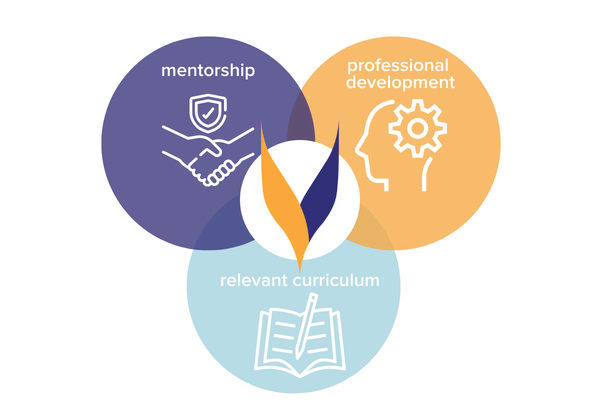Transition to Practice Program, Fellowship, Residency, Onboarding... What's the Difference?
In ThriveTalks episode five, Veronica Hill, DNP, CRNP, VP of Programs & Content at ThriveAP, breaks down the differences between transition to practice programs, fellowships, residencies and onboarding. It can be confusing as a provider trying to navigate your new role and find career advancement opportunities, especially when many terms are, inexplicably, used interchangeably. Through Veronica's unique experience developing ThriveAP curriculums she is often at the forefront of helping providers and employers alike better understand the nuances. Hopefully this breakdown will help you identify what opportunity makes most sense for you, and your organizations', goals.
Breaking Down Transition to Practice Programs, Fellowships, Residencies, and OnboardingRead the ThriveTalks Episode 5 Transcript
In developing curriculums for ThriveAP I am often asked, "is this a curriculum for fellowship or residency programs? Can it be used for onboarding or transition to practice programs?"
There is a lot of confusion surrounding these different programs, today we are going to take a few minutes and try to define the differences between each program. Let's start with residency and APP fellowship programs.
Residency & APP Fellowship Programs
Typically, 6 to 12-month programs for new graduate NPs or PAs or those that are new to a specialty. These programs include teaching oversight, typically have a program director, a mentorship advocate, or someone that is designated to precept or mentor the participants. They tend to align with a specialization track such as critical care or cardiology, for example. There are a few residencies as well in the Primary Care field. The big difference with these programs is participants are not full employees of the organizations. They're fully credentialed providers but their employment is not guaranteed after the APP fellowship program or residency program is completed.
Participants typically have a decreased compensation, benefits, and salary versus your transition to practice programs or onboarding programs.
Transition to Practice Programs & Onboarding Programs
These two programs are comprised of fully hired providers to the organization.
Transition to Practice Program
This type of program helps the APP transition with didactic, academic knowledge. Provider participants are supported in this transition, they may, or may not, have a preceptor or mentorship depending on the organization. Transition to practice programs are clinically focused versus an onboarding program.
Further Reading: What is a Transition to Practice Program?
Onboarding Program
An onboarding program encompasses transition based materials, such as a preceptor and didactic criteria. The main goal of an onboarding program is to fully acclimate the APP to the organization. The provider has a clear roadmap to the next 12-months with a defined timeline from ramp-up to seeing a full patient panel, and they may rotate through various departments of the organization. This rotation experience will help the participant understand, and feel welcomed to the organization, in efforts to retain the APP.
Clearly, there are a lot of different names for these types of programs and we hope we were able to help clarify some of the key differences. In our next ThriveTalk we will delve deeper into onboarding programs and the value they represent for both the provider and employer.
Accelerate Your PA or NP Career With Transition to Practice Education
ThriveAP augments APP fellowship or transition to practice programs with our proven curriculums. The 12-month CME/CE accredited curriculums help APPs with didactic, evidence-based education.
Our unique blend of mentorship, professional development, and relevant curriculum will help you achieve more and practice at the top of licensure. Apply Today. 

